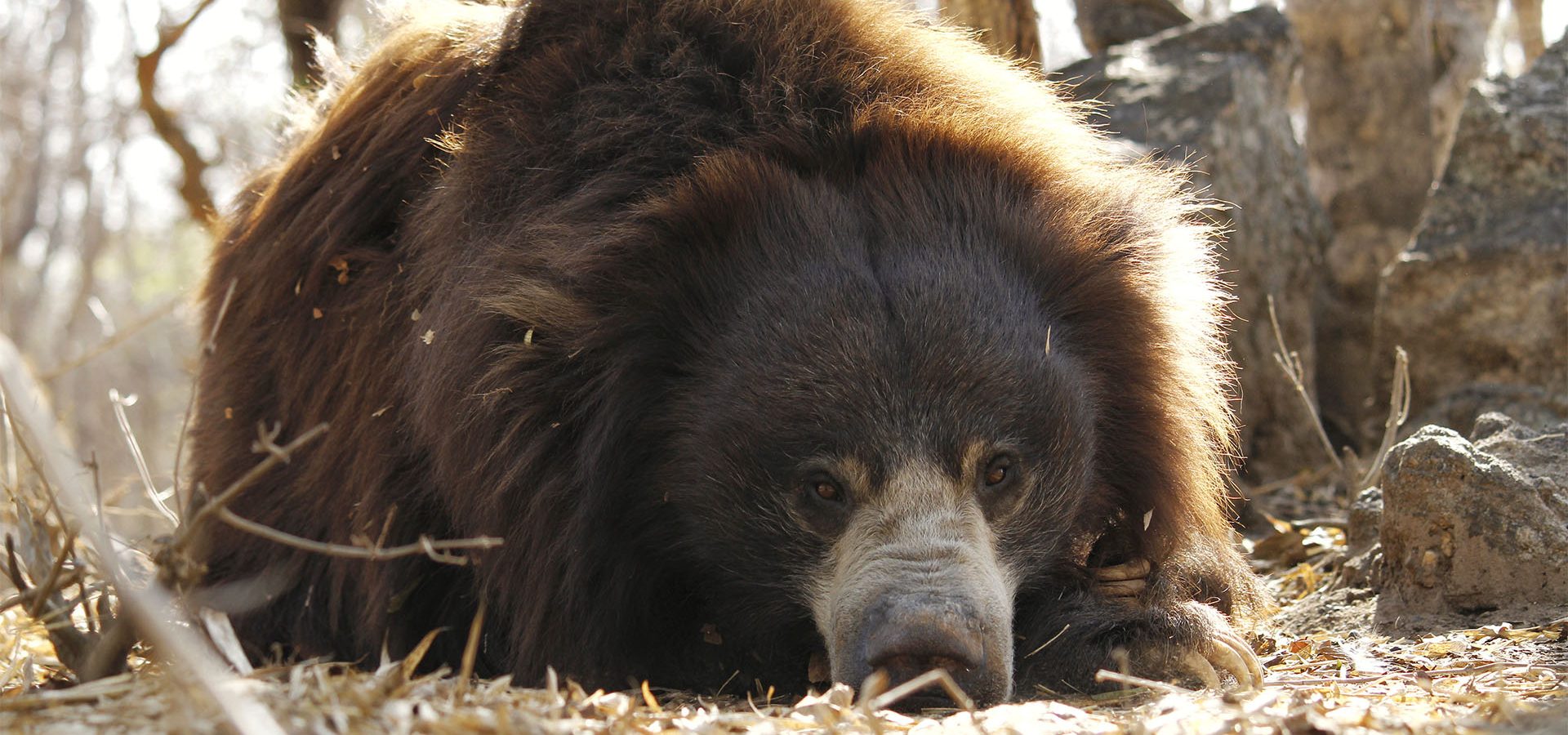William Somerset famously said, “Tradition is a guide and not a jailer.” Yet millions worldwide continue to be imprisoned within the confines of tradition, blindly following old patterns of thought. One such man jailed in the labyrinth of tradition was Saddam Hussain, a member of the Kalandar community, a nomadic group that carried on the age-old tradition of taming sloth bears as “dancing bears” for a living. When the practice of dancing bears was put to an end by Wildlife SOS, Saddam was forced to reconceptualize his Kalandar tradition. To provide members of the Kalandar community with an alternative form of livelihood, Wildlife SOS hired Saddam and many other Kalandars as bear caregivers across our four centres. Here, Saddam met Gayathri, a female sloth bear that taught him how to view his Kalandar tradition as a guide and not a jailer.
“I grew up in the Kalandar community. It is all I knew,” says Saddam when asked about himself. The tradition of taming sloth bears had been passed on from father to son in this community. Sloth bears were captured at a young age, and a hot iron poker was punctured through their nose. A tight rope was tied around the raw wound, which the bear’s Kalandar master pulled. The agony caused by tugging the rope would force the sloth bears onto their feet, an action interpreted as “dancing.” These dancing bears were used to solicit money from tourists and locals who, ignorant of the torture inflicted on the bear, would remunerate the Kalandars.
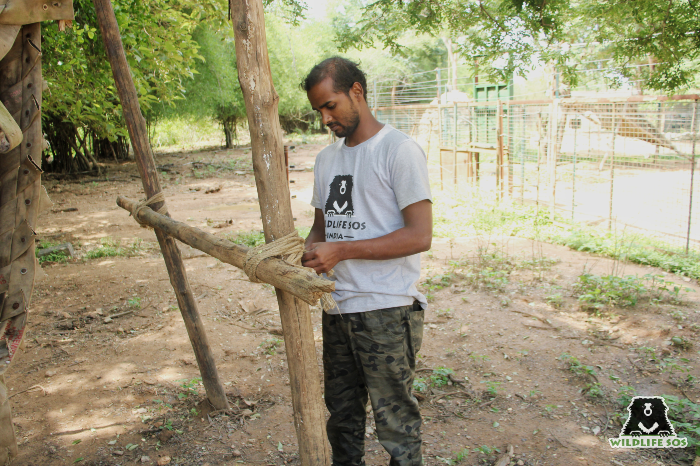
For Saddam, “ the agony and pain of the sloth bear never enter my mind. It was just something we had been doing for centuries, and I never questioned the tradition.” With no other skills taught to young boys, even the idea of refusing to tame sloth bears was far-fetched. The widespread poverty in the community forced these young men to continue the practice knowing well that, often basic needs like food and shelter would remain unmet without this source of income. Unable to break the cycle of poverty, the tradition of dancing bears continued.
The brutal practice of Dancing bears in India only ended in 2009, primarily due to the efforts of Geeta Seshamani and Kartick Satyanarayan, co-founders of Wildlife SOS. It took years before the two could gain the trust of the community and rescue the bears. They knew they couldn’t save the bears without providing alternative forms of livelihood for the Kalandars. Thus, over 5,000 Kalandar families spread out across six states, and over 15 villages were given support to become economically independent. Wildlife SOS even employed some of the Kalandar men as bear caregivers.
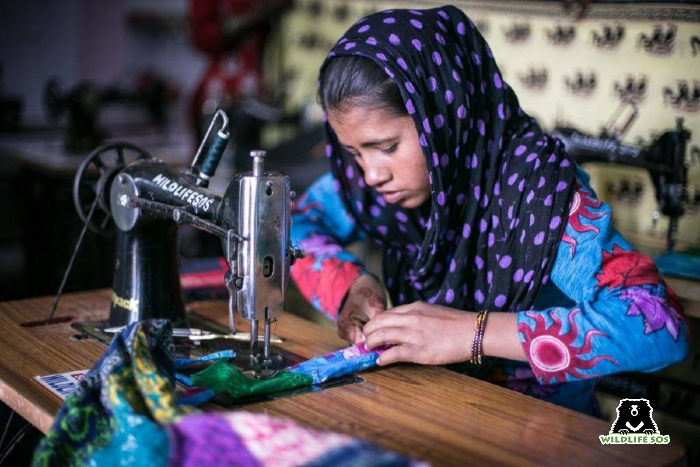
“Several members of my community were already working for Wildlife SOS, and they gave me an opportunity to join as well. I knew this was a job I would have been able to do because I knew a lot about sloth bears already. It’s been 9 years since I first started working with Wildlife SOS.” says Saddam.
He was assigned to Gayathri, a sloth bear who was ironically rescued as a dancing bear herself. Gayathri is a gregarious bear who relishes every aspect of her freedom. Even today, she spends her time running across the free-ranging field, refusing to be put in any sort of enclosed space. Her rambunctious free spirit appealed to Saddam, who himself was exploring his newfound freedom from the confines of the tradition of dancing bears. Gayathri seemed to have instinctively picked up on Saddam’s kind nature and began trusting him quicker than she had ever trusted any other bear caregiver.
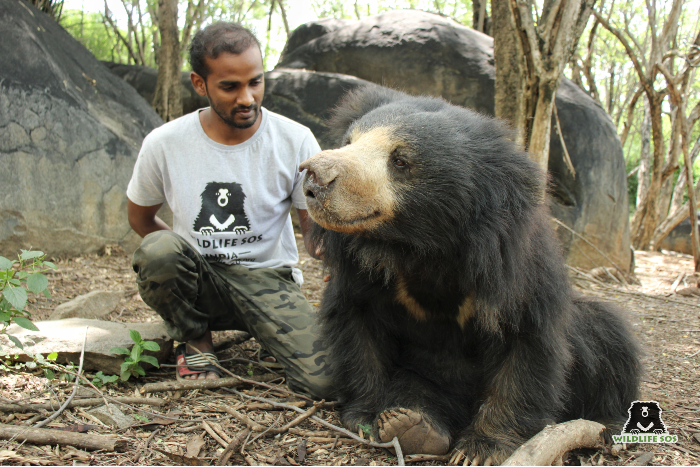
Saddam used his Kalandar tradition as a guide, utilizing his generational knowledge of Sloth bears to care for Gayathri. He would bring her favourite fruit, Chikoo (sapodilla), and teach her how to extract its delicious goodness! He accompanied her to her daily target training sessions that utilized operant conditioning to teach bears like Gayathri to perform desired actions on command, like extending their paw your for blood draws or open their mouth for dental check-ups. This makes medical examinations of rescued bears a more manageable task and allows them to experience minimal discomfort during their regular checkup. Saddam would gleefully hand Gayathri her favourite treats every time she successfully extended her paw.
Gayathri trots across the open fields of BBRC and follows his familiar voice and her fondness for Saddam has only grown stronger over the years. When Gayathri refuses to eat her food, Wildlife SOS caregivers know to call Saddam, whose gentle coaxing is enough to convince Gayathri to eat her meal.
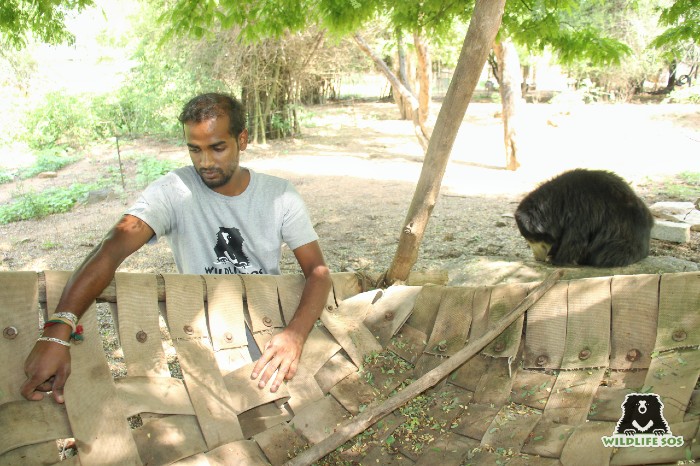
“ Getting to know Gayathri completely changed my perspective on Sloth Bears. Previously when I encountered these large mammals, I had an assumption that they were all vicious creatures and I acted out of this fear of being attacked. As I got to know Gayathri I realized, I was wrong. Every bear is different, and almost none of them want to harm anyone. Because of Gayathri, I have begun treating all bears as individuals in their own right with differing personalities, and likes” says Saddam.
Oftentimes we navigate the world with the assumption that humans have a lot to teach animals. Yet, Saddam’s story shows us how we might be wrong. Without even trying to be a teacher, Gayathri taught Saddam unforgettable lessons. She showed him how to break away from old patterns of thought, something that was previously impossible for Saddam. She allowed Saddam to utilize his community’s tradition of taming sloth bears and his generational knowledge of bears for a better purpose. Gayathri opened a door for Saddam that brought him into a world built on the tenets of compassion and empathy for all – animals and humans – alike.
To know more about how you can help us protect the sloth bears of India, click HERE.

